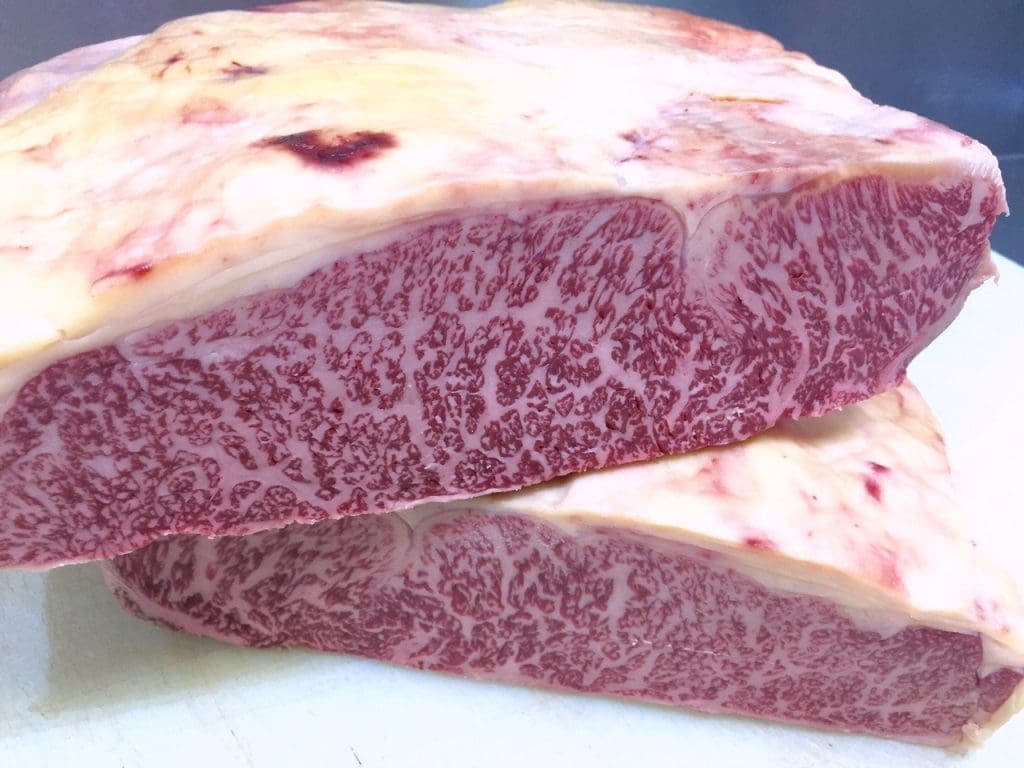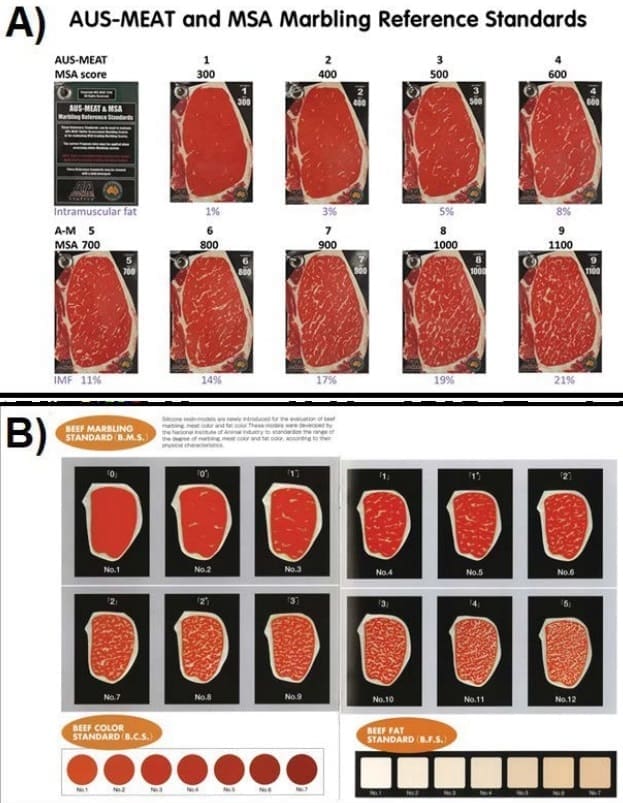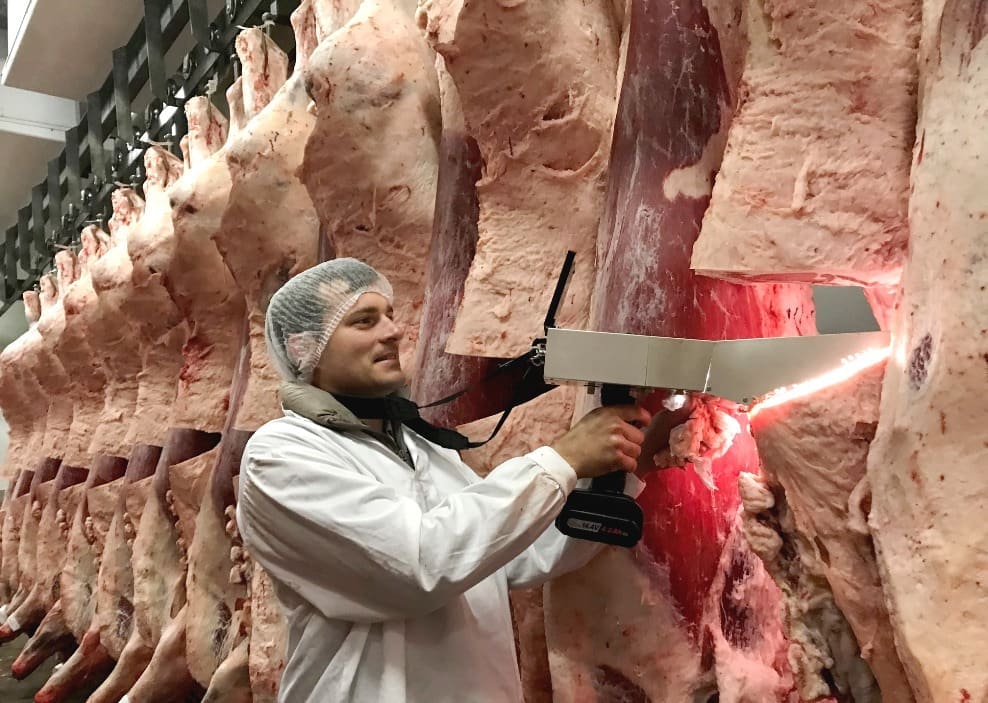
OBJECTIVE carcase measurements in the Australian meat industry are helping provide Wagyu beef supply chains and BreedPlan genetic evaluation with more precise data than is currently available through manual assessment.
The Australian Wagyu Association has been investigating the use of the MIJ-30 objective carcase camera to provide a higher level of measurement accuracy on intramuscular fat content, marbling distribution (fineness) and eye muscle area in Wagyu and Wagyu cross carcases.
With this data, breeders will be better able to identify breeding potential using BreedPlan EBVs based on objective carcase data, while suppliers to food service, retail and export will be able to strengthen their brands with more accurate descriptions of product.
Traditionally AusMeat qualified meat graders assess each carcase in a chilled environment at a prescribed period after slaughter, using a set of quantitative measurements and qualified reference charts to define the grade. These parameters include carcase weight, P8 fat depth, dentition, ossification, intramuscular fat content (marbling score), meat colour, fat colour and eye muscle area.
Voluntary additional values can also be included to define eating quality under Meat Standards Australia. In contrast, the MIJ-30 camera allows for the collection of objective carcase measurements. By using objective measurements from calibrated instruments to grade carcases, subjective measurements are removed.
In addition, objective carcase measurements allow a greater level of repeatability and precision in the resulting carcase grades. AusMeat grading from marbling score (MS) 0 to 9 is equivalent to 0% to 21% intramuscular fat (IMF%) content as determined by extractable fat (chemical fat; Figure 1).
Wagyu carcases can exceed 50% IMF, with other factors such as fineness also important for eating quality and value for all breeds. The Japanese carcase grading system, overseen by the Japan Meat Grading Authority (JMGA) is more complex and includes marbling, yield, colour/brightness, meat texture and fat quality.
The Japanese Beef Marbling Standards (BMS) can also reach BMS 12, which is equivalent to more than 50pc IMF (Figure 1). Figure 2 shows the relationship between AusMeat, USDA and JMGA grades and IMF%.

Each grading system has its own purpose and range, however IMF% is the true standard that allows each grading system to be compared. With objective grading using MIJ-30, the level of intramuscular fat can be given as a percentage along with a score allocated depending on the required grading system.
For the Australian industry, using accurate marbling score data across the full range of IMF% and being able to compare against world marketplace competitors is invaluable for assessing product quality and genetic gain in marbling.
Any EBV is dependent on the quality and accuracy of the performance data that the trait is measured with. In the case of Australian Wagyu, the top 30% of genetics sits above AusMeat marble score 9 and this proportion needs be identified to accurately grade and make management decisions to achieve the best possible genetic progress.

The mechanisations of the MIJ-30
The Meat Image Japan (MIJ-30) camera, pictured above, has been evolving for more than 20 years. The grading starts with a scan of the carcase identification via a barcode scanner, followed by a digital image by the camera of the eye muscle to calculate the range of traits important to carcase quality. Comparisons between chemical analysis of fat content and the MIJ-30 indicate that the accuracy is up to 90%.
Eye muscle area calculations are also highly accurate, as the technology uses automatic edge detection and can compensate for variations in cut angles and carcase rotations. The MIJ-30 uses a digital CCD optical system with a resolution of 12Mb.
Using a cloud-based analysis system that provides real-time grading, the camera takes a digital image that is uploaded via WiFi with results given within 20 seconds. If WiFi is not available, or upload speeds are slow from the processing site, images can be stored on USB for analysis back in the office.
Each camera has a unique identifier, providing the customer with secure data and transfer. Images taken by the MIJ-30 is tagged with the identifier, giving the processor full ownership of the images and results. The unit is fully enclosed and manufactured from stainless steel for hygienic operation and is easily cleaned.
The use of the MIJ-30 in industry
The MIJ-30 system has been in the Australian, New Zealand and South Africa Wagyu supply chains in some form or another for the past thirteen months. During this time there has been more than 9000 carcase images captured from the supply chain collecting objective carcase data.
A new finding from initial work has been an improved understanding of the variation in marbling fineness that exists within the Australian Wagyu content slaughter population. Fineness of marbling has a large influence on the eating quality of beef. The MIJ-30 camera and cloud-based grading system incorporates this with the Digital Marbling fineness assessment score based on the MIJ developed ‘New Fineness Index’.
The New Fineness Index calculates the circumference of each marbling particle to evaluate the total length of particle size as a proportion to the total ribeye area enabling carcases to be ranked based on fineness. In the Japanese BMS grading system, both Marbling Percentage and the New Fineness Index are important for objectively measuring BMS accurately with the MIJ camera.
The ability for the Wagyu production system to select for animals that present well for marbling percent as well as marbling fineness presents a true positive move forward for product quality. Within the data gathered so far from the Wagyu supply chain to date, marbling fineness can vary greatly, having a large impact on eating quality and texture.
Source: SBTS

